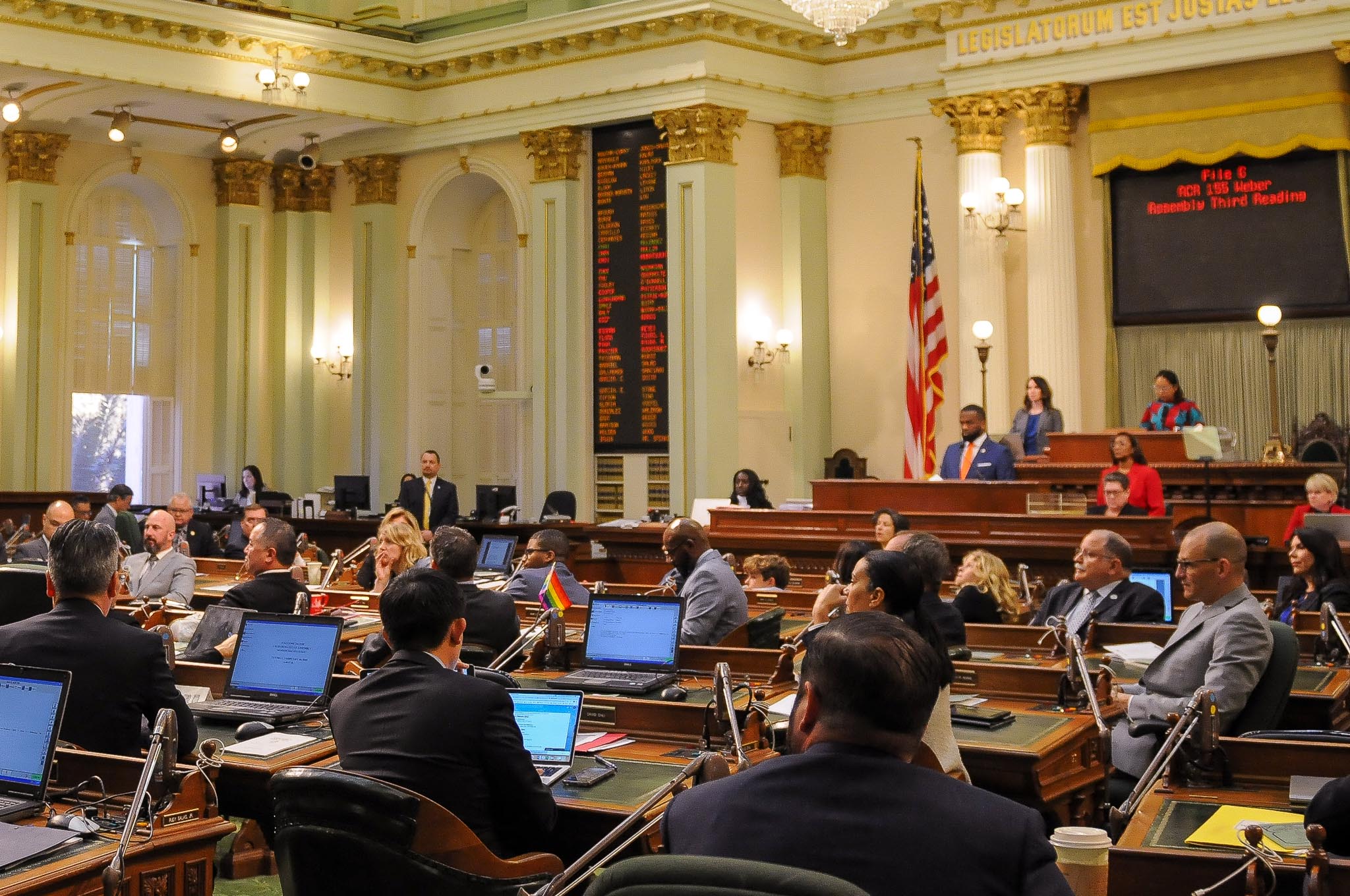
California State Senate Chambers. (Photo: Katy Grimes for California Globe)
A Different Type of Double-jointing Language?
Double jointing amendments are used to prevent this chaptering out problem from occurring
By Chris Micheli, October 5, 2023 10:56 am
As readers may recall, double jointing requires technical amendments prepared by the Office of Legislative Counsel that will prevent an amended bill from “chaptering out” the provisions of another bill when both bills amend the same Code section. According to Legislative Counsel, “double-jointing amendments to a bill provide that the amended bill does not override the provisions of another bill, where both bills propose to amend the same section of law.”
Double jointing amendments are used to prevent this chaptering out problem from occurring by allowing all of the changes to a code section proposed by two or more bills to take effect. The double-jointing language must be put into both measures in order to be effective.
The following example from a bill from the 2023 Session is the standard double-jointing language that readers will find in the vast majority of bills. This standard language provides that the provision of one bill is to become operative if the three tests are met:
SEC. 3.
Section 2.5 of this bill, which adds Section 527.8 to the Code of Civil Procedure, includes provisions proposed to be added in that section by Senate Bill 553. Section 2.5 of this bill shall only become operative if (1) both bills are enacted and become effective on or before January 1, 2024, (2) each bill adds Section 527.8 to the Code of Civil Procedure, and (3) this bill is enacted after Senate Bill 553, in which case Section 2 of this bill shall not become operative.
In reviewing bills pending on Governor Newsom’s Desk, I came across a provision that we see once or twice per year, which is a form of double-jointing language, usually contained in a “code maintenance” bill, or a measure that makes a significant number of technical changes to often multiple codes. The following is the language:
SEC. 30.
Any section of any act enacted by the Legislature during the 2023 calendar year that takes effect on or before January 1, 2024, and that amends, amends and renumbers, adds, repeals and adds, or repeals a section that is amended, amended and renumbered, added, repealed and added, or repealed by this act, shall prevail over this act, whether the act is enacted before, or subsequent to, the enactment of this act.
What does the language above accomplish? According to the Legislative Counsel’s Digest, this language provides that “any act (i.e., any additional statute enacted by a bill) that is enacted by the Legislature during the 2023 calendar year that amends, amends and renumbers, adds, repeals and adds, or repeals a section that is amended, amended and renumbered, added, repealed and added, or repealed by this act, will prevail over this act, whether the act is enacted before, or subsequent to, the enactment of this act.”
In other words, any other bill enacted during the 2023 Session that gets enacted will prevail over the changes made by this particular bill. It means that this bill defers to any other changes made to the same code section by any other bills enacted this year. That is why I view the language above as a different version of the standard double-jointing language.
- Should Interpretive Guidance Be Included in California Legislation? - April 28, 2024
- Legislative Intent Does Not Equate to a Mandate - April 27, 2024
- Frequently Asked Questions about State Agency Ethics Training - April 26, 2024





*sigh* Does it have to be that complicated or is just job security for lawyers?